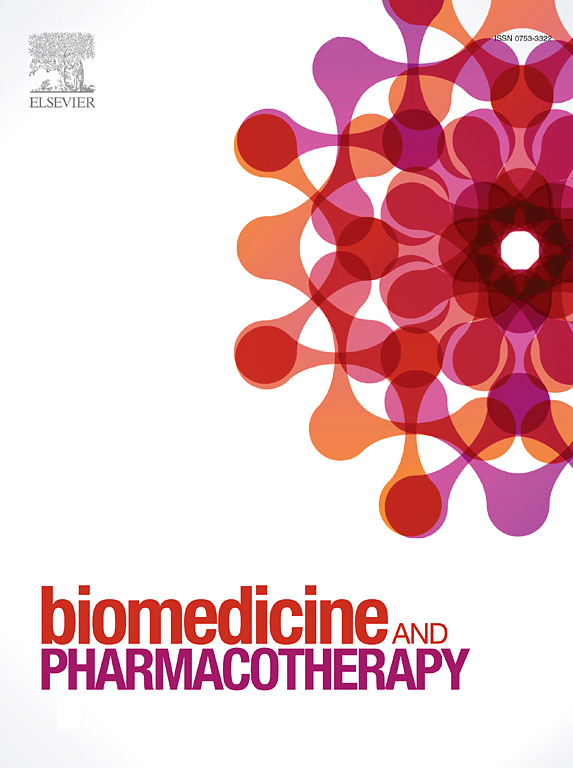A new perspective on targeting pulmonary arterial hypertension: Programmed cell death pathways (Autophagy, Pyroptosis, Ferroptosis)
IF 6.9
2区 医学
Q1 MEDICINE, RESEARCH & EXPERIMENTAL
引用次数: 0
Abstract
Pulmonary arterial hypertension (PAH) is a severe cardiovascular disease characterized by elevated pulmonary vascular resistance, progressive increases in pulmonary artery pressures, ultimately leading to right-sided heart failure, and potentially mortality. Pulmonary vascular remodeling is pivotal in PAH onset and progression. While targeted drug therapies have notably ameliorated PAH prognosis, current medications primarily focus on vascular vasodilation, with limited ability to reverse pulmonary vascular remodeling fundamentally, resulting in suboptimal patient prognoses. Cellular death in pulmonary vasculature, once thought to be confined to apoptosis and necrosis, has evolved with the identification of pyroptosis, autophagy, and ferroptosis, revealing their association with vascular injury in PAH. These novel forms of regulated cellular death impact reactive oxygen species (ROS) generation, calcium stress, and inflammatory cascades, leading to pulmonary vascular cell loss, exacerbating vascular injury, and mediating adverse remodeling, inflammation, immune anomalies, and current emerging mechanisms (such as endothelial-mesenchymal transition, abnormal energy metabolism, and epigenetic regulation) in the pathogenesis of PAH. This review comprehensively delineates the roles of autophagy, pyroptosis, and ferroptosis in PAH, elucidating recent advances in their involvement and regulation of vascular injury. It juxtaposes their distinct functions in PAH and discusses the interplay of these programmed cell deaths in pulmonary vascular injury, highlighting the benefits of combined targeted therapies in mitigating pulmonary arterial hypertension-induced vascular injury, providing novel insights into targeted treatments for pulmonary arterial hypertension.
针对肺动脉高压的新视角:细胞程序性死亡途径(自噬、凋亡、铁凋亡)。
肺动脉高压(PAH)是一种严重的心血管疾病,其特点是肺血管阻力升高、肺动脉压力逐渐增加,最终导致右侧心力衰竭,并可能导致死亡。肺血管重塑是 PAH 发病和恶化的关键因素。虽然靶向药物疗法明显改善了 PAH 的预后,但目前的药物主要侧重于血管舒张,从根本上逆转肺血管重塑的能力有限,导致患者预后不佳。肺血管中的细胞死亡曾被认为仅限于细胞凋亡和坏死,但随着热噬、自噬和铁噬的发现,它们与 PAH 的血管损伤之间的关系也得到了发展。这些新形式的调节性细胞死亡会影响活性氧(ROS)的生成、钙应激和炎症级联反应,导致肺血管细胞丢失,加重血管损伤,并介导 PAH 发病机制中的不良重塑、炎症、免疫异常和当前新出现的机制(如内皮-间充质转化、能量代谢异常和表观遗传调控)。这篇综述全面阐述了自噬、热昏迷和铁昏迷在 PAH 中的作用,阐明了它们参与和调控血管损伤的最新进展。它并列了自噬在 PAH 中的不同功能,讨论了这些程序性细胞死亡在肺血管损伤中的相互作用,强调了联合靶向疗法在减轻肺动脉高压诱导的血管损伤方面的益处,为肺动脉高压的靶向治疗提供了新的见解。
本文章由计算机程序翻译,如有差异,请以英文原文为准。
求助全文
约1分钟内获得全文
求助全文
来源期刊
CiteScore
11.90
自引率
2.70%
发文量
1621
审稿时长
48 days
期刊介绍:
Biomedicine & Pharmacotherapy stands as a multidisciplinary journal, presenting a spectrum of original research reports, reviews, and communications in the realms of clinical and basic medicine, as well as pharmacology. The journal spans various fields, including Cancer, Nutriceutics, Neurodegenerative, Cardiac, and Infectious Diseases.

 求助内容:
求助内容: 应助结果提醒方式:
应助结果提醒方式:


